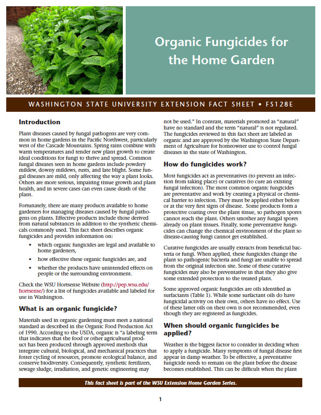You have no items in your shopping cart.
Recently viewed products
General Gardening
General Gardening
Landscaping with Native Plants in the Inland Northwest
Contents include: general information about native plants and what they are, planning a naturalized landscape, landscape plan drawings, incorporating native plants into existing landscapes, providing ...
$0.00
Lingonberry Production Guide for the Pacific Northwest
Lingonberries are native to Scandinavia, Europe, Alaska, and northeastern Canada, but are not widely cultivated. Known commercial lingonberry acreage is less than 100 acres worldwide, and one-third ...
$0.00
Marketing Alternatives for Fresh Produce
New marketing opportunities for Pacific Northwest vegetable and fruit growers are exciting and inventive. Increased public desire for nutritious and minimally processed food grown locally and susta ...
$0.00
Methods for Successful Cover Crop Management in Your Home Garden (Home Garden Series)
This fact sheet is one of a three-part series on cover crops for home gardeners. It focuses on methods for managing garden cover crops, including planning, planting, managing nutrients, and terminatin ...
$0.00
Mole Management in Washington Backyards (Home Garden Series)
Moles are serious pests to lawns and gardens in western Washington, along with a few areas east of the Cascade Mountains. This publication will help home gardeners develop a multi-action plan to deal ...
$0.00
Organic Fungicides for the Home Gardener (Home Garden Series)
There are many products available to home gardeners for managing diseases caused by fungal pathogens on plants. Effective products include those derived from natural substances, in addition to the syn ...
$0.00
Organic Management of Flea Beetles
Flea beetles are common garden pests found throughout the Pacific Northwest. Flea beetle feeding on plants in the Brassicaceae and Solanaceae families can scar foliage and potato tubers, leading to re ...
$0.00
Organic Pest Management in Backyard Fruit Trees and Berry Patches
The goal of this publication is to provide gardeners in the Pacific Northwest with an organic approach to keep their home grown tree fruit and berries pest free. This approach begins with proper plant ...
$0.00
Organic soil amendments in yards and gardens: How much is enough? (Home Garden Series)
Organic soil amendments can benefit most garden soils, however, applying too much can waste money, increase the risk of harming water quality, and even harm plants. This fact sheet describes the benef ...
$0.00










